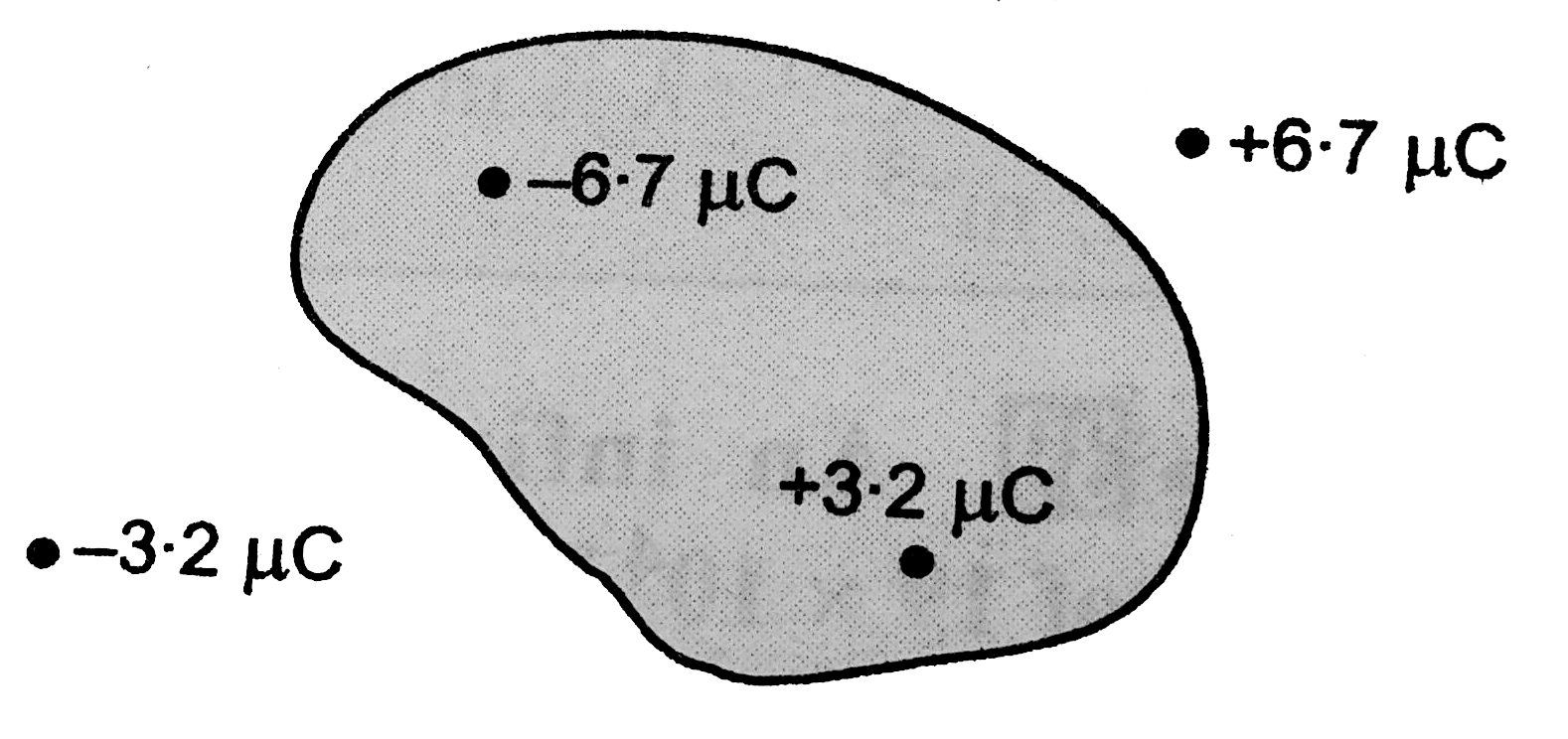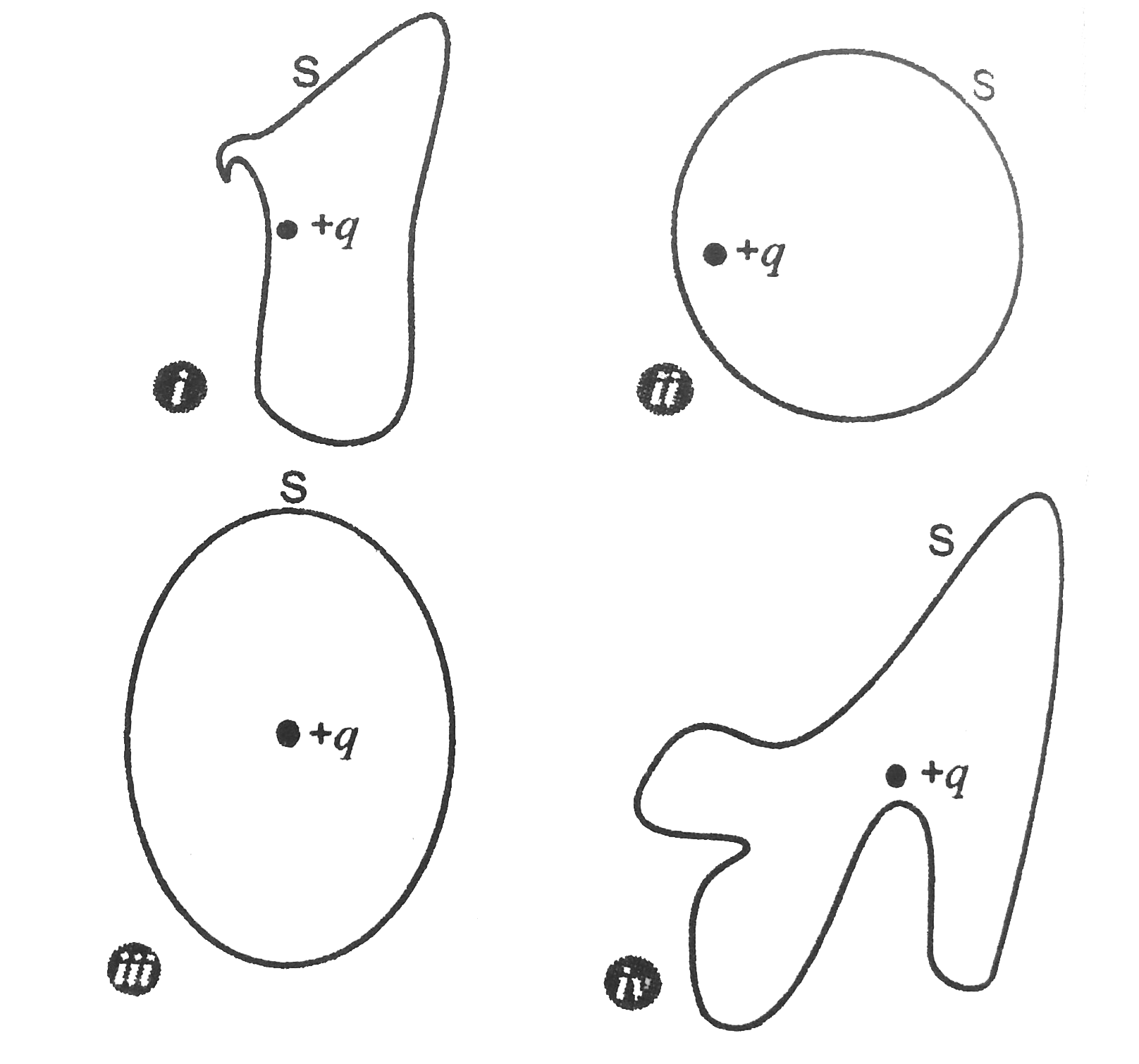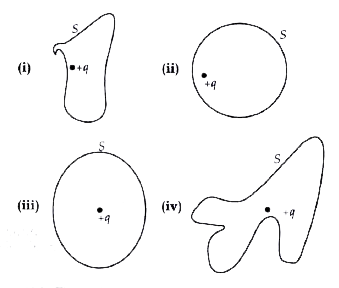Fig shows a closed surface surrounding some electric charges (a) what is the net electric flux through the surface? (b) Is the electric flux directed inward or outward from the surface ?

(a) Here, total charge inside the surface :
q=−6.7μC+3.2μC=−3.5μC
As ϕE=q∈0=−3.5×10−68.85×10−12
=−3.95×105Nm2C−1
(b) As ϕe is negative, it is directed Inwards.
Similar Questions
Knowledge Check
- Question 1 - Select One
The electric flux through the surface
 Ain fig. (iv) is the largestBin fig. (iii) is the leastCin fig. (ii) is same as fig.(iii) but is smaller than fig.(iv)DIs the same for all the figures.
Ain fig. (iv) is the largestBin fig. (iii) is the leastCin fig. (ii) is same as fig.(iii) but is smaller than fig.(iv)DIs the same for all the figures. - Question 2 - Select One
The electric flux through the surface
 Ain fig, (iv) is the largestBin fig, (iii) is the leastCin fig (ii) is same as a fig (iii) but is smaller than that in Fig (iv).Dis the same for all the figures.
Ain fig, (iv) is the largestBin fig, (iii) is the leastCin fig (ii) is same as a fig (iii) but is smaller than that in Fig (iv).Dis the same for all the figures. - Question 3 - Select One
What is the electric flux linked with closed surface?
 A1011N−m2/CB1012N−m2/CC1010N−m2/CD8.86×1013N−m2/C
A1011N−m2/CB1012N−m2/CC1010N−m2/CD8.86×1013N−m2/C
A closed surface encloses a net charge of −3.60μC. What is the net electric flux through the surface?
(b) The electric flux through a closed surface is found to be 780N−m2/C. What quantity of charge is enclosed by the surface?
(c) The closed surface in part (b) is a cube with sides of length 2.50 cm. From the information given in part (b), is it possible to tell where within the cube the charge is located? Explain.View SolutionIf electric flux passing through a close surface is zero then :-
View SolutionIf the net electric flux through a closed surface is zero, then we can infer
View SolutionIf the net electric field flux passing through a closed surface is zero, then the electric field at the surface will be
View SolutionA surface enclosed an electric dipole, the flux through the surface is -
View Solution


